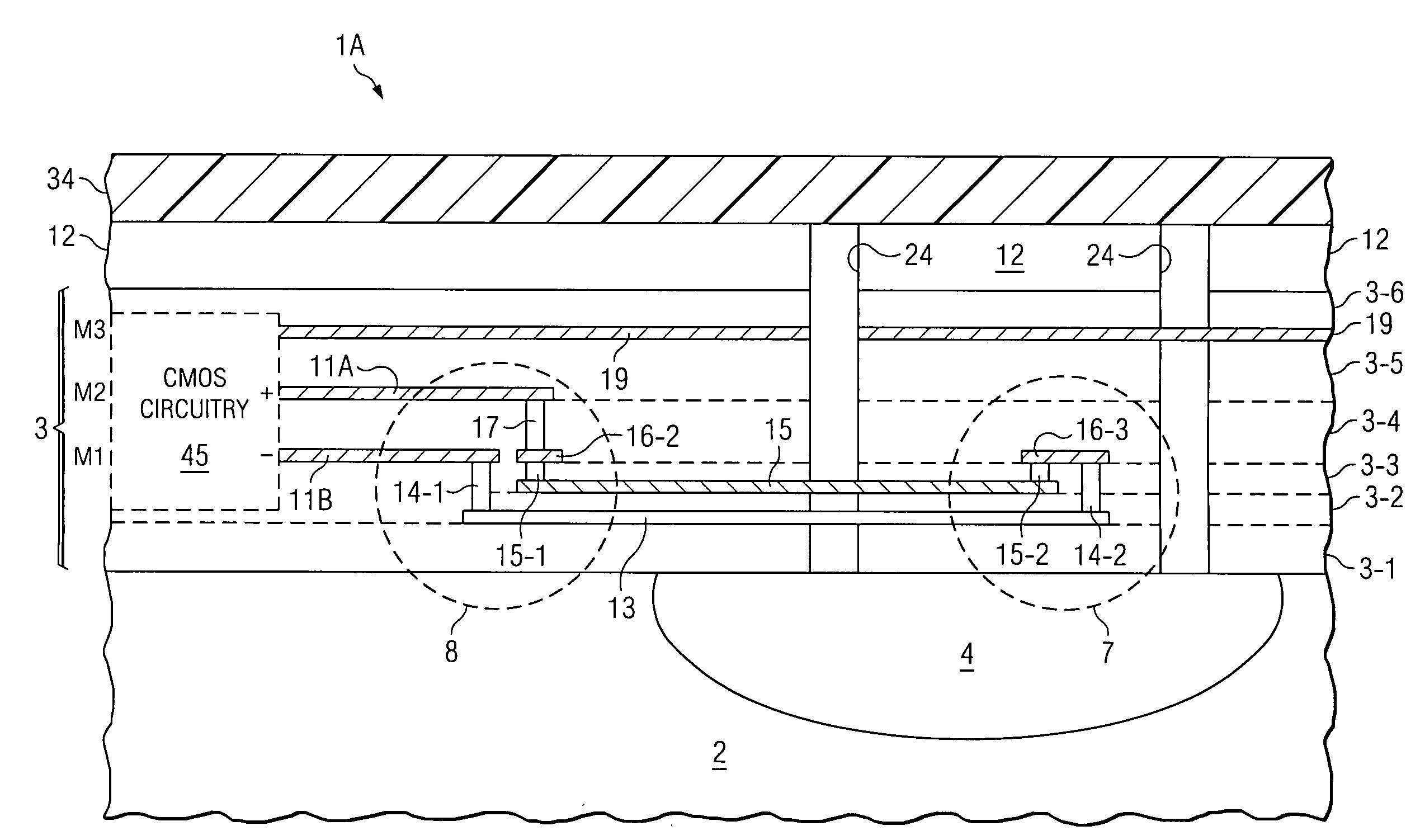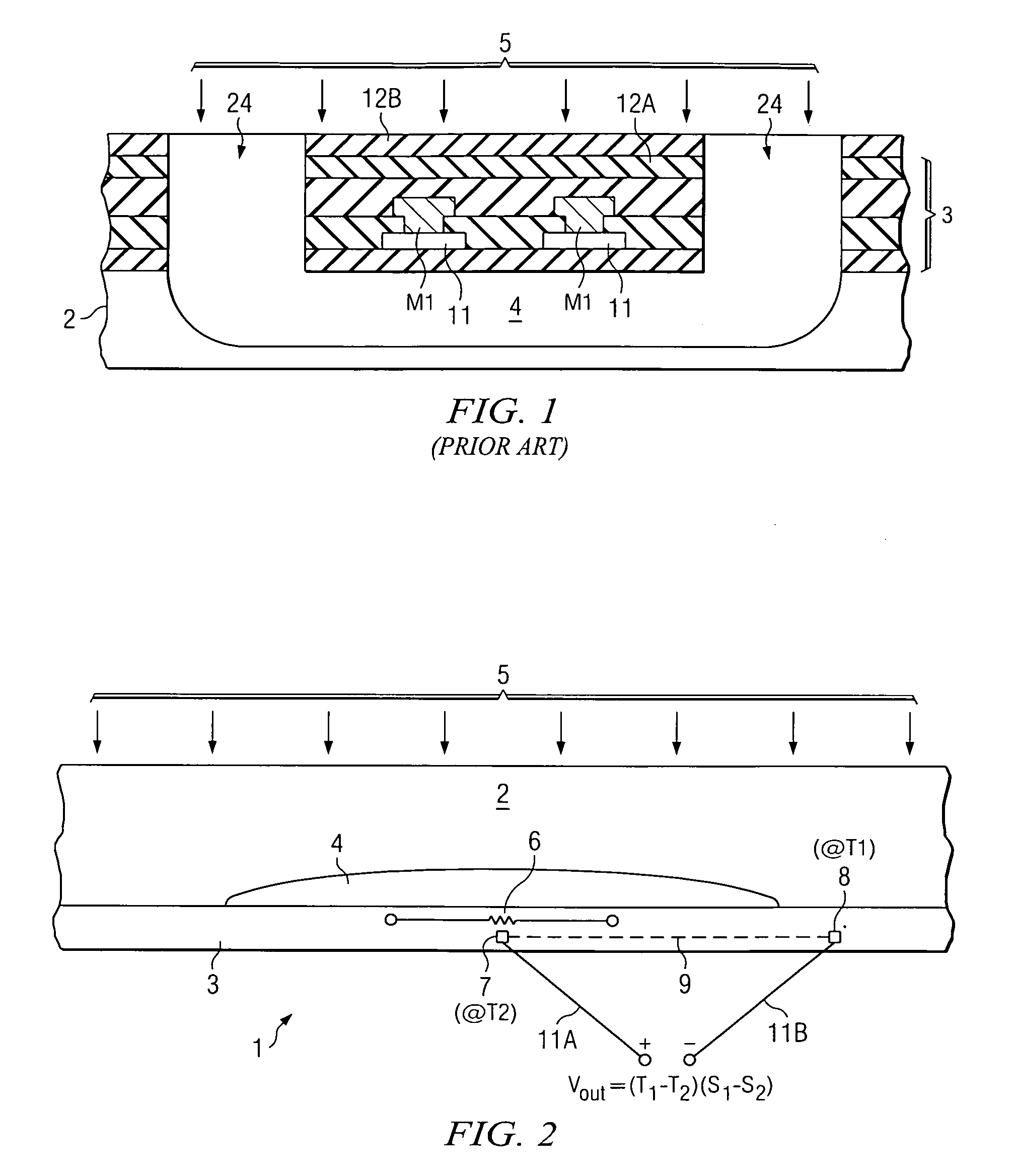On-chip calibration system and method for infrared sensor
a technology of infrared sensor and calibration system, which is applied in the direction of optical radiation measurement, instruments, material analysis, etc., can solve the problems of large opening span, large opening span, and large opening span that is difficult to protect, so as to achieve convenient responsivity calibration and convenient use. , the effect of more accurate responsivity calibration
- Summary
- Abstract
- Description
- Claims
- Application Information
AI Technical Summary
Benefits of technology
Problems solved by technology
Method used
Image
Examples
Embodiment Construction
[0051]FIG. 2 shows a schematic representation of a IR sensor chip 1 of the present invention, with the sensor chip 1 inverted relative to the orientation shown in FIG. 1. In FIG. 2, IR detector chip 1 includes silicon substrate 2 in which cavity 4 is formed. A conventional CMOS-processing-compatible SiO2 dielectric stack 3 is formed on the lower surface of silicon substrate 2. The upward-oriented back surface of silicon substrate 2 receives IR radiation 5 and passes it through to SiO2 stack 3 while filtering out any ambient visible light. SiO2 stack 3 may contain various aluminum traces, polysilicon traces, and various other traces and metal contacts that are available in some conventional CMOS wafer fabrication processes. A first thermopile junction 7 is formed by dissimilar materials within dielectric stack 3 adjacent to cavity 4, and is thermally insulated, by cavity 4, from silicon substrate 2. A second thermopile junction 8 is formed by dissimilar materials within dielectric st...
PUM
 Login to View More
Login to View More Abstract
Description
Claims
Application Information
 Login to View More
Login to View More - R&D
- Intellectual Property
- Life Sciences
- Materials
- Tech Scout
- Unparalleled Data Quality
- Higher Quality Content
- 60% Fewer Hallucinations
Browse by: Latest US Patents, China's latest patents, Technical Efficacy Thesaurus, Application Domain, Technology Topic, Popular Technical Reports.
© 2025 PatSnap. All rights reserved.Legal|Privacy policy|Modern Slavery Act Transparency Statement|Sitemap|About US| Contact US: help@patsnap.com



